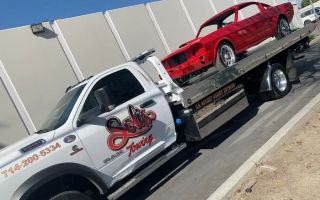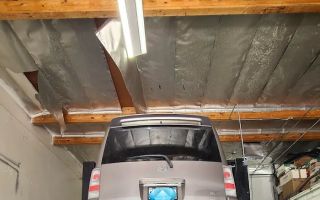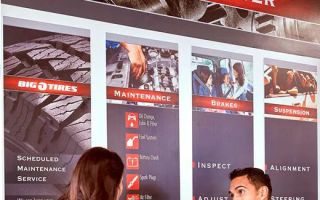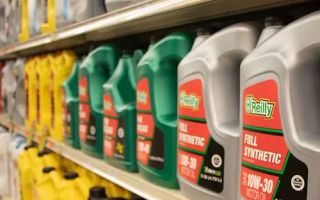How to Repair a Faulty Brake Master Cylinder: A Step-by-Step Guide for Car Owners
- Introduction
- Understanding the Brake Master Cylinder
- Signs of a Faulty Brake Master Cylinder
- How to Diagnose a Brake Master Cylinder Issue
- Repairing Your Brake Master Cylinder
- When to Call for Professional Help
- Final Thoughts
The brake master cylinder is a critical component in your vehicle's braking system. It converts the force from your foot pressing on the brake pedal into hydraulic pressure, which is then used to stop your car. When the brake master cylinder fails or malfunctions, it can lead to serious safety issues. In this guide, we will walk you through the steps on how to repair a faulty brake master cylinder, including diagnosing the problem and deciding when to call for professional help. Whether you’re an experienced car enthusiast or a DIY mechanic, this guide will help you tackle the repair confidently.
Understanding the Brake Master Cylinder
The brake master cylinder is at the heart of your car's braking system. It is responsible for converting the pressure you apply to the brake pedal into hydraulic force that actuates the brake calipers and ultimately slows or stops the vehicle. The master cylinder is typically located near the back of the engine compartment, directly behind the brake booster.
Modern cars typically use dual-circuit master cylinders, which means there are two separate hydraulic circuits—one for the front brakes and one for the rear brakes. This redundancy helps ensure that if one circuit fails, the other can still function to some extent, allowing for safer braking in emergencies.
Signs of a Faulty Brake Master Cylinder
A faulty brake master cylinder can manifest in several ways. Understanding the symptoms can help you catch the issue early before it compromises your safety. Here are the most common signs of a failing master cylinder:
- Soft or Spongy Brake Pedal: If you notice that the brake pedal feels soft or spongy when you press it, this could be a sign that the master cylinder is not maintaining the proper hydraulic pressure.
- Brake Pedal Goes to the Floor: If the brake pedal sinks all the way to the floor when you press it, this is a serious issue that may indicate a complete failure of the brake master cylinder or a significant brake fluid leak.
- Brakes Not Responding Properly: If your car takes longer to stop or you feel uneven braking, it might be time to inspect the master cylinder for problems.
- Visible Fluid Leaks: If you see brake fluid leaking from the master cylinder or any of the brake lines, this is an indication that there is a problem that needs to be addressed immediately.
If any of these symptoms occur, it's important to diagnose and repair the brake master cylinder as soon as possible to avoid further complications.
How to Diagnose a Brake Master Cylinder Issue
Diagnosing a faulty brake master cylinder typically involves a combination of visual inspection and functional testing. Here’s how you can diagnose the problem:
- Inspect for Leaks: Check around the master cylinder, brake lines, and brake fluid reservoir for any signs of leaks. Leaking brake fluid is a clear indication that the master cylinder may need to be replaced.
- Test the Brake Pedal: With the car off, press the brake pedal a few times. If it feels soft or sinks to the floor after repeated presses, it’s a sign that the master cylinder could be malfunctioning.
- Check Brake Fluid Levels: Low brake fluid levels can sometimes mimic symptoms of a faulty master cylinder. Ensure the brake fluid is at the proper level and check for signs of contamination (e.g., dark, dirty fluid).
- Perform a Pressure Test: In some cases, a pressure test may be required to determine if the master cylinder is functioning properly. This involves using specialized tools to measure the hydraulic pressure in the brake lines.
If you're unsure about the diagnosis, it's always a good idea to seek professional help to confirm the issue.
Repairing Your Brake Master Cylinder
Repairing a brake master cylinder is a detailed process that requires mechanical skill and knowledge. If you're a DIY mechanic, here's an overview of how to repair or replace a faulty brake master cylinder:
- Gather the Necessary Tools: You will need a jack and jack stands, a brake fluid container, wrenches, screwdrivers, and possibly a brake master cylinder repair kit (if you're rebuilding it rather than replacing).
- Lift the Vehicle: Safely lift and support the vehicle using a jack and jack stands to access the master cylinder. Be sure to wear gloves and work in a well-ventilated area.
- Remove the Master Cylinder: Disconnect the brake lines from the master cylinder using appropriate wrenches. Then, remove any mounting bolts holding the cylinder in place and carefully take it off.
- Inspect and Rebuild or Replace: If you're rebuilding the master cylinder, use the repair kit to replace worn seals, springs, and other parts. If the cylinder is too damaged, it’s best to replace it with a new or remanufactured unit.
- Reinstall the New or Rebuilt Cylinder: Install the new or rebuilt master cylinder, reattach the brake lines, and ensure everything is tightened securely. Refill the brake fluid reservoir with the recommended fluid.
- Bleed the Brakes: After installation, you’ll need to bleed the brakes to remove air from the lines. This is essential to restoring proper brake function.
After completing the repair, test the brakes in a safe environment to ensure everything is functioning properly. If you're unsure about any part of the process, it’s always safer to consult a professional mechanic.
When to Call for Professional Help
While repairing the brake master cylinder can be a manageable DIY project for experienced car owners, some situations call for professional assistance. If you’re unsure about diagnosing the problem, if the repair requires special tools, or if you're not comfortable working with brake components, it’s best to call a professional mechanic or a towing service for help.
Additionally, if your brakes are still not functioning correctly after you’ve replaced the master cylinder, it’s important to have your vehicle checked by an expert to avoid any safety risks.
In such cases, Rescue & Towing offers towing services and can help transport your vehicle to a qualified mechanic for repairs. We specialize in emergency car services and are just a call away if you need urgent assistance.
Final Thoughts
Repairing a faulty brake master cylinder is a crucial skill for car owners, especially for those who prefer handling basic mechanical repairs themselves. By understanding the signs of a faulty master cylinder, diagnosing the issue properly, and following the correct repair procedures, you can restore your vehicle’s braking performance and maintain safety on the road. However, always remember that if you’re unsure about any step in the process, seeking professional help can save you time, effort, and ensure your vehicle is safe to drive.
For those in need of towing or professional assistance, don’t hesitate to contact Rescue & Towing for prompt and reliable service. We’re here to support you through all your vehicle repair and towing needs.


























